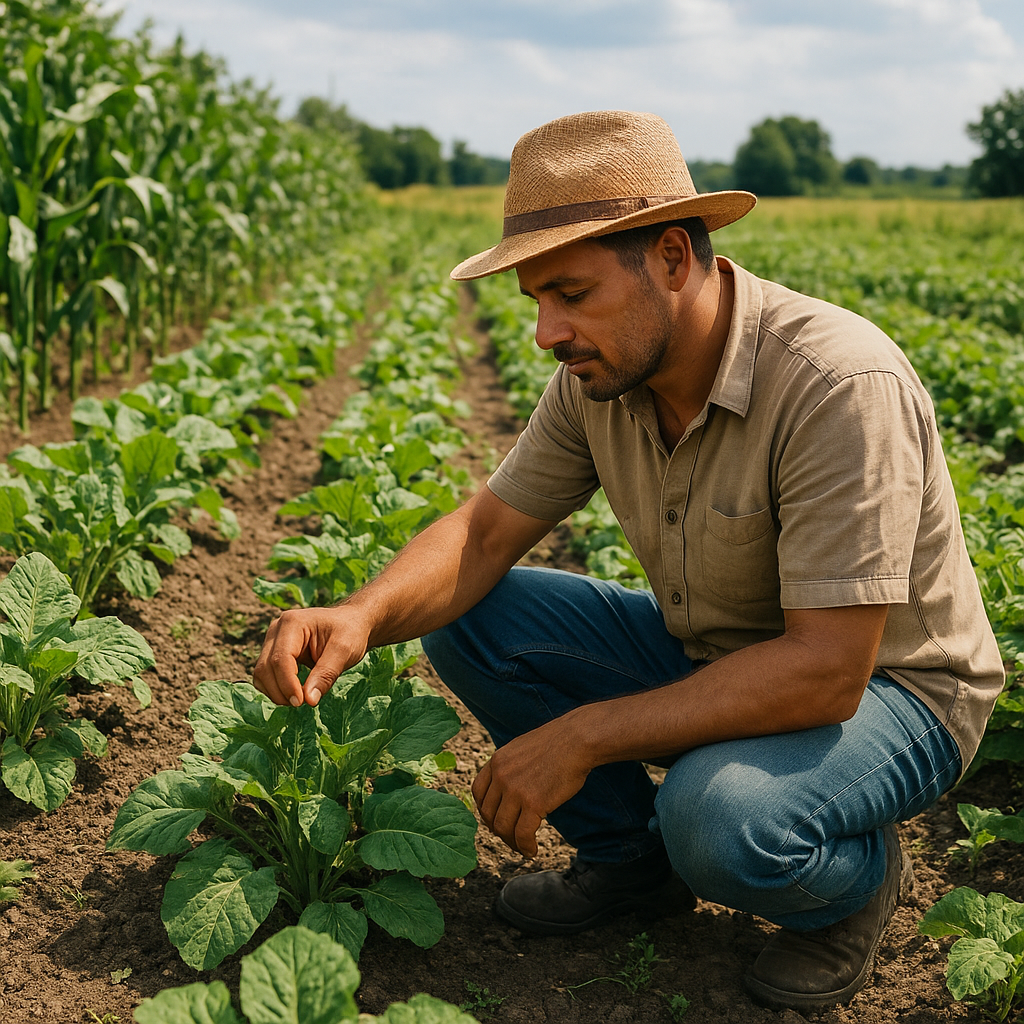
Controlling farm weeds naturally is an essential practice for sustainable agriculture, aiming to reduce the reliance on chemical herbicides and promote environmental health. Weeds can significantly impact crop yields by competing for nutrients, water, and sunlight, making effective management crucial for farmers. This article explores the best practices for natural weed control, focusing on methods that enhance soil health, biodiversity, and long-term productivity.
Understanding the Role of Weeds in Agriculture
Before delving into natural weed control methods, it’s important to understand the role weeds play in agricultural ecosystems. Weeds are often seen as a nuisance, but they can also provide certain ecological benefits. They contribute to soil structure, offer habitat for beneficial insects, and can even indicate soil health issues. However, their competitive nature with crops necessitates effective management strategies.
Weeds can be categorized into annuals, biennials, and perennials, each with distinct growth patterns and control challenges. Annual weeds complete their life cycle in one year, making them easier to manage with timely interventions. Biennials take two years to complete their cycle, while perennials can persist for several years, often requiring more intensive control measures.
The Impact of Weeds on Crop Production
Weeds compete with crops for essential resources such as light, water, and nutrients. This competition can lead to reduced crop yields and quality, impacting the economic viability of farming operations. Additionally, some weeds can harbor pests and diseases, further threatening crop health. Understanding these impacts is crucial for developing effective weed management strategies.
Moreover, weeds can interfere with harvesting operations, leading to increased labor costs and potential damage to machinery. They can also affect the aesthetic value of crops, particularly in horticultural and ornamental plant production. Therefore, integrating natural weed control methods is vital for maintaining both productivity and profitability.
Natural Weed Control Methods
Natural weed control methods focus on enhancing the resilience of agricultural systems through ecological approaches. These methods aim to reduce weed pressure while promoting biodiversity and soil health. Below are some of the most effective natural weed control practices:
Cultural Practices
Cultural practices involve modifying farming techniques to suppress weed growth. These practices include crop rotation, cover cropping, and adjusting planting dates. Crop rotation disrupts weed life cycles by alternating crops with different growth habits, reducing the prevalence of specific weed species.
Cover cropping involves planting non-cash crops during fallow periods to suppress weeds. Cover crops, such as clover or rye, provide ground cover, outcompeting weeds for resources. They also improve soil health by adding organic matter and enhancing nutrient cycling.
Adjusting planting dates can also be an effective strategy. By planting crops at optimal times, farmers can give crops a competitive advantage over weeds, reducing the need for additional interventions.
Mechanical Control
Mechanical control methods involve physical removal or suppression of weeds using tools and machinery. These methods include tillage, mowing, and hand weeding. Tillage can be effective for controlling annual weeds by disrupting their root systems, but it may not be suitable for perennial weeds, which can regenerate from root fragments.
Mowing is particularly useful for managing weeds in pastures and orchards, preventing them from setting seed and spreading. Hand weeding, although labor-intensive, is effective for small-scale operations and in areas where machinery cannot reach.
Biological Control
Biological control involves using natural enemies to suppress weed populations. This method includes introducing or encouraging beneficial organisms such as insects, fungi, or bacteria that target specific weed species. For example, certain beetles and caterpillars feed on weed foliage, reducing their growth and reproduction.
Biological control is a sustainable approach that minimizes the need for chemical interventions. However, it requires careful planning and monitoring to ensure that introduced organisms do not become invasive or negatively impact non-target species.
Mulching
Mulching is a simple yet effective method for suppressing weeds. By covering the soil with organic or inorganic materials, such as straw, wood chips, or plastic, mulching prevents sunlight from reaching weed seeds, inhibiting their germination. Mulching also helps retain soil moisture and regulate soil temperature, benefiting crop growth.
Organic mulches, such as straw or wood chips, decompose over time, adding organic matter to the soil and improving its structure. Inorganic mulches, like plastic or landscape fabric, provide longer-lasting weed suppression but do not contribute to soil health.
Integrating Natural Weed Control into Farm Management
Integrating natural weed control methods into farm management requires a holistic approach that considers the entire agricultural ecosystem. Farmers should assess their specific weed challenges, crop types, and environmental conditions to develop tailored strategies. Combining multiple methods can enhance effectiveness and reduce reliance on any single approach.
Monitoring and record-keeping are essential components of successful weed management. By tracking weed populations and control measures, farmers can evaluate the effectiveness of their strategies and make informed adjustments. Regular monitoring also helps identify emerging weed issues before they become problematic.
Challenges and Considerations
While natural weed control methods offer numerous benefits, they also present certain challenges. Implementing these methods may require additional labor, time, and resources compared to conventional chemical approaches. Farmers must weigh the long-term benefits of sustainability and environmental health against the immediate demands of weed management.
Additionally, natural methods may not provide immediate results, requiring patience and persistence. Farmers should be prepared for a learning curve as they adapt to new practices and refine their strategies over time.
Conclusion
Controlling farm weeds naturally is a vital component of sustainable agriculture, promoting environmental health and long-term productivity. By understanding the role of weeds and implementing a combination of cultural, mechanical, biological, and mulching methods, farmers can effectively manage weed populations while enhancing soil health and biodiversity. Although challenges exist, the benefits of natural weed control far outweigh the drawbacks, paving the way for a more sustainable and resilient agricultural future.

